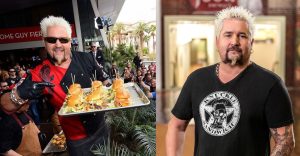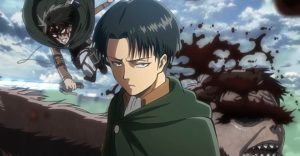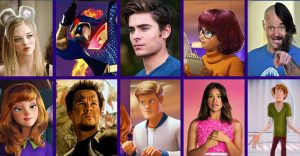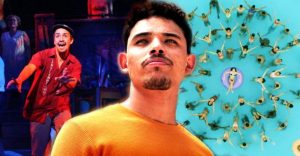Every Martin Scorsese Cameo In His Own Movies Explained

Martin Scorsese is arguably the greatest living American film director, and since the very beginning of his decades-spanning career, he’s made a habit of appearing in his films in small cameo roles. No doubt taking his cue from filmmakers like Alfred Hitchcock, who was never shy of a cameo, his onscreen roles have been legion. Sometimes they’re a fully realized character, such as his chilling turn as a cab passenger in Taxi Driver. Others he’s more content with a blink-and-you’ll-miss-it walk on role, or even a voiceover.
Scorsese’s career began in 1967, with his debut film Who’s That Knocking At My Door? A small-scale film that received a respectable critical appraisal at the time, it set the director on his path to explore the Italian-American experience, as well as issues of guilt and faith. His visionary direction, however, wouldn’t completely crystallize until 1973’s Mean Streets, which kickstarted his relationship with Robert De Niro and put him on the map as a director to watch. Over the years, he’s made an entire litany of diverse classics, from gangster flicks like Goodfellas and The Departed, to religious epics like Silence and The Last Temptation of Christ. More than five decades later, his career shows no signs of stopping, with his last film The Irishman receiving some of the best reviews of his career and his upcoming Killers of the Flower Moon set to be a major 2022 release.
Throughout all these films, he’s been a constant presence both behind and in front of the camera. Sometimes a godlike offscreen voice, sometimes a literal camera man framing the action onscreen, Marty has embraced the art of the cameo. Here are all of his roles in his own movies, explained.
Who’s That Knocking At My Door? (1967)

The world was introduced to Martin Scorsese in 1967 with his debut film, Who’s That Knocking At My Door? A small chamber piece about a young Italian-American man dealing with Catholic guilt and some unspoken secrets in his relationship, the film held its world premiere at the Chicago International Film Festival, jump-starting the career of one of American cinema’s most important directors. It also began his penchant for cameos, as he appears uncredited as a gangster in the film.
Boxcar Bertha (1972)

Scorsese’s second feature is a Bonnie and Clyde-esque tale of two train robbers and lovers who become fugitives after the titular Bertha murders a wealthy gambler. Marty’s cameo here is as a brothel customer who comes calling for Bertha during her stint as a prostitute.
Mean Streets (1973)

Scorsese’s real big breakthrough came with 1973’s semi-autobiographical Mean Streets, which also features a slightly more sizable cameo for the director. He’s actually credited this time, as gangster henchman Jimmy Shorts. In the closing moments of the film, he’s spotted firing out the backseat of a car at Charlie Cappa (Harvey Keitel) and Johnny Boy (Robert DeNiro), delivering the killing blow to the latter. Interestingly enough, Marty appears twice more in the film, first in a still with Harvey Keitel in the main title sequence, and another time as the film’s opening voice-over.
Alice Doesn’t Live Here Anymore (1974)

Another blink-and-you’ll-miss-it cameo from the director occurs in Alice Doesn’t Live Here Anymore. Ellen Burstyn’s Alice, a widow traveling across the Southwestern United States with her son in search of a better life, winds up taking a waitress job at a diner in Tucson. Scorsese can be spotted at a back table, enjoying a coffee and conversation.
Taxi Driver (1976)

Certainly his largest cameo to date, Martin Scorsese plays a pivotal role around the 40-minute mark, the second of his two cameos in Taxi Driver. Credited as “Passenger Watching Silhouette,” Scorsese requests that De Niro’s Travis Bickle, the titular taxi driver, loiter in his cab outside an apartment building wherein his wife is cheating on him with another man. In one of the most chilling moments in an iconically chilling film, the character calmly tells Bickle how he’s going to kill his wife with a .44 Magnum, thus planting the idea of gun violence in Bickle’s head for later in the film. Scorsese replaced an actor who dropped out last minute due to injury, but holds his own magnificently opposite one of De Niro’s greatest performances. Funnily enough, Marty also appears early on in the film as a man on the street.
Raging Bull (1980)

Robert De Niro gives arguably his best performance in Scorsese’s 1980 masterpiece, Raging Bull. Playing emotionally stunted middleweight boxer Jake LaMotta, he packed on a whole bunch of weight for the film’s final scenes, where LaMotta has transitioned to playing comedy shows and reciting monologues from Shakespeare and On the Waterfront. Scorsese can be vaguely spotted in the mirror in the film’s final shot, informing LaMotta that the auditorium where he’s about to perform is crowded. The director drifts out of frame, leaving La Motta to shadowbox before heading out to the stage, pumping himself up with chants of “I’m the boss.”
The King of Comedy (1982)

Scorsese teamed up with De Niro again for the 1982 dark satire The King of Comedy, one of the movies that most “inspired” 2019’s Joker. De Niro plays Rupert Pupkin, a delusional stand-up comic who goes to extreme lengths for fame. Meanwhile, Scorsese casts himself in a brief turn as a TV director prepping Tony Randall for a guest host stint on a talk show usually headlined by Jerry Lewis’ Jerry Langford.
After Hours (1985)

Martin Scorsese won both the Cannes Festival and Independent Spirit Award for Best Director for his work on the black comedy After Hours. While his direction is as kinetic and dynamic as ever, he’s a bit more difficult to spot in his cameo. Panning through a club in Berlin, the camera catches him for just a second as a spot operator lighting up the dance floor.
The Color of Money (1986)

The Color of Money stars Paul Newman and Tom Cruise, but it also features two cameos from its director. Around an hour and a half into the movie, there’s a brief shot of a man breaking the rack at a pool hall. An appropriately timed pause button moment reveals the man to be none other than Marty. Perhaps more endearingly, he’s seen walking his own dog Zoe in another scene set in an Atlantic City casino.
New York Stories (1989)

Scorsese only directed one of the segments in the anthology film New York Stories, with The Godfather and Apocalypse Now‘s Francis Ford Coppola and Woody Allen directing the other two. That segment, titled “Life Lessons,” features Nick Nolte as an abstract artist named Lionel Dobie. For one brief moment, Marty is seen as a man holding a dog getting his picture taken with Dobie.
The Age of Innocence (1993)

The Age of Innocence, an adaptation of the novel of the same name by Edith Wharton, is quietly one of Scorsese’s most sumptuous offerings. Featuring performances by Daniel Day-Lewis, Winona Ryder, and Michelle Pfeiffer, the film concerns the romantic entanglements of Newland Archer, a wealthy new York attorney. Before Archer’s wedding to Ryder’s May, the director is seen as the fussy wedding photographer.
Bringing Out the Dead (1999)

In the latter portion of his career, Martin Scorsese took a shine to being heard and not seen in his cameos. In 1999’s Bringing Out the Dead, his voice is audible as the dispatcher communicating over the radio with John Goodman’s Larry, a graveyard shift ambulance driver.
Gangs of New York (2002)

Gangs of New York is one of Scorsese’s most polarizing (and lengthy) works. Even buried amidst its immense running time, however, the director is unmistakable in his cameo. Playing a wealthy landowner sitting at the head of the table, he’s one of the targets whom Cameron Diaz’s Jenny pickpockets.
The Aviator (2004)

In the case of The Aviator, Marty took two tiny roles. One is visible, as a man with slicked-back hair pulling a woman away from Leonardo DiCaprio’s Howard Hughes as he walks the red carpet with Cate Blanchett’s Katharine Hepburn. The other is a brief vocal turn as the projectionist for Hell’s Angels, who’s communicating with Hughes from the booth in his screening room.
Hugo (2011)

There’s no missing Marty in his 2011 family film Hugo. While he won the Golden Globe Award for Best Director for the movie, he also dons a top hat as the photographer taking pictures of a young George Melies outside his new studio. Not long after, his voice can be heard inside the studio saying, “Good, that’s good, yes.“
The Wolf of Wall Street (2013)

Here’s another audio-only performance from the maestro himself. Billed as John, he’s the first client Leo’s Jordan Belfort dupes selling Aerotyne I.N.D. penny stocks. The film itself is an excessive portrait of greed and corruption, with Scorsese pulling the strings in his most kinetic film since Goodfellas, so it’s interesting to see him casting himself as the titular wolf’s first victim.
Silence (2016)

Silence is one of Scorsese’s most recent and underrated gems. It’s also maybe his most blink-and-you’ll-miss-him cameo. Near the end of the film, when Ferreira and Rodrigues are in Nagasaki, Martin can be seen in the courtyard, seated on the left. Disguised in a traditional missionary cloak and large black hat, his most recent cameo shows that Martin Scorsese will always be there hiding in his films for eagle-eyed fans.
Next: Every Martin Scorsese Movie, Ranked Worst to Best
About The Author


















